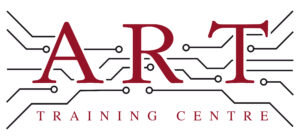Definition
Solder Wick is a copper braid coated with flux, used in electronics manufacturing to absorb excess solder. It acts as a component in the soldering process, facilitating the removal of solder from printed circuit boards (PCBs) during rework or repair. By using solder wick, technicians can effectively clean up solder joints and correct mistakes, ensuring a reliable and tidy assembly.
How It’s Used in the Industry
In electronics assembly, solder wick is applied during the rework process when excess solder needs to be removed from a PCB. Technicians place the solder wick over the solder joint and apply a soldering iron on top. The heat causes the solder to melt and be drawn into the wick through capillary action. This method is essential for correcting soldering mistakes or removing components without damaging the PCB. For both trainees and experienced professionals, understanding how to effectively use solder wick is crucial for maintaining high-quality standards in electronic assemblies.
History & Origins
Solder wick became common in electronics manufacturing during the late 20th century, as the demand for precision in PCB assembly grew. Early adoption coincided with advancements in soldering techniques and the establishment of standards, such as IPC (Institute for Printed Circuits). As technology evolved, solder wick emerged as a reliable solution for rework and maintenance, becoming an integral part of the electronics industry to ensure high-quality solder joints and repairs.
Variations
There are several variations of solder wick, including different widths and flux types to suit various applications. Some solder wicks are designed for specific solder types, such as lead-free solder, while others may have enhanced flux for better absorption. Compared to similar processes like desoldering pumps, solder wick is often preferred for its ability to remove solder without the risk of damaging components or the PCB, making it a versatile tool for both novices and professionals.
Modern Applications
Today, solder wick is widely used in electronics production, repair, and professional training. It is particularly relevant for both surface mount and through-hole assembly techniques, where precise solder removal is necessary. Its importance is underscored by the need for quality and reliability in electronic products, as well as compliance with IPC standards. Proper use of solder wick helps ensure that assemblies meet stringent performance requirements and reduces the likelihood of defects.
Practical Tips & Training
When working with solder wick, ensure you use the appropriate width for the solder joint size and apply sufficient heat without overheating the PCB. Inspect the wick after use to confirm that it has absorbed the solder effectively. Safety is paramount; always wear appropriate protective equipment. Structured training and certification in soldering techniques, including the use of solder wick, are essential for developing the skills necessary for quality electronics manufacturing.


